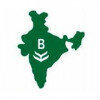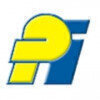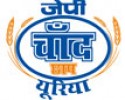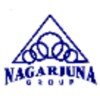Filter interviews by
GSP Crop Science Production Supervisor Interview Questions and Answers
10 Interview questions
A scrubber vacuum system cleans air or liquids by removing contaminants using filtration and scrubbing techniques.
Used in industrial settings to control air pollution.
Involves a scrubber unit that removes particulates and gases.
Can be applied in wastewater treatment to purify effluents.
Examples include wet scrubbers for gas absorption and dry scrubbers for particulate removal.
Endothermic reactions absorb heat, while exothermic reactions release heat during the process.
Endothermic reactions require energy input, often in the form of heat.
Example: Photosynthesis, where plants absorb sunlight to convert CO2 and water into glucose.
Exothermic reactions release energy, usually as heat or light.
Example: Combustion of fuels, like burning wood or gasoline, which releases heat.
Distillation is a process of separating components of a liquid mixture based on their different boiling points.
Distillation involves heating a liquid mixture to vaporize the more volatile components.
The vapor is then cooled and condensed back into a liquid, resulting in the separation of the components.
The component with the lower boiling point will vaporize first and be collected separately.
Distillation is common...
Safety precautions before entering the plant included wearing personal protective equipment (PPE) and undergoing safety training.
Wearing appropriate PPE such as hard hats, safety glasses, gloves, and steel-toed boots
Undergoing safety training on plant hazards, emergency procedures, and proper use of equipment
Following specific entry procedures such as sign-in/sign-out protocols and safety checks
Participating in sa...
The pressure of water in a fire hydrant water tank is typically around 7 kg.
The pressure in a fire hydrant water tank is measured in kilograms per square centimeter (kg/cm^2)
This pressure is necessary to ensure that water can be quickly and effectively sprayed onto a fire
The pressure may vary depending on the specific location and regulations
Mechanical foam cylinders are commonly used in chemical fires for their ability to quickly suppress flames by forming a blanket of foam.
Mechanical foam cylinders are effective in suppressing fires involving flammable liquids and chemicals.
The foam generated by these cylinders helps to smother the fire by cutting off the oxygen supply.
These cylinders are typically used in industrial settings where there is a higher...
Different types of reactions include exothermic, endothermic, reversible, and irreversible. Cooling towers are used to remove heat from industrial processes.
Exothermic reactions release heat and require cooling to prevent overheating.
Endothermic reactions absorb heat and require heating to maintain the reaction.
Reversible reactions can go in either direction depending on the conditions.
Irreversible reactions only ...
Distillation is a process of separating components of a liquid mixture based on their different boiling points.
Distillation is used in industries such as petroleum refining, chemical manufacturing, and alcoholic beverage production.
There are two main types of distillation: batch distillation and continuous distillation.
Batch distillation involves heating a mixture in a still and collecting the condensed vapors as ...
The interviewee is asked about types of valves, ejectors, pumps, vacuum creation, and full forms of RTD and TI.
Types of valves include gate, ball, butterfly, globe, needle, etc.
Ejectors are of two types - steam ejectors and water ejectors.
Pumps work by creating a pressure difference to move fluids.
Vacuum is created by removing air molecules from a closed space.
Steam lines use globe valves while ball valves are use...
Heat transfer types include conduction, convection, and radiation.
Conduction is the transfer of heat through direct contact between objects or substances.
Convection is the transfer of heat through the movement of fluids or gases.
Radiation is the transfer of heat through electromagnetic waves.
Examples of conduction include touching a hot stove or holding a metal spoon in hot soup.
Examples of convection include boil...
GSP Crop Science Production Supervisor Interview Experiences
5 interviews found
I appeared for an interview in Jun 2025, where I was asked the following questions.
- Q1. What are endothermic and exothermic reactions?
- Ans.
Endothermic reactions absorb heat, while exothermic reactions release heat during the process.
Endothermic reactions require energy input, often in the form of heat.
Example: Photosynthesis, where plants absorb sunlight to convert CO2 and water into glucose.
Exothermic reactions release energy, usually as heat or light.
Example: Combustion of fuels, like burning wood or gasoline, which releases heat.
- Q2. What is a scrubber vacuum system?
- Ans.
A scrubber vacuum system cleans air or liquids by removing contaminants using filtration and scrubbing techniques.
Used in industrial settings to control air pollution.
Involves a scrubber unit that removes particulates and gases.
Can be applied in wastewater treatment to purify effluents.
Examples include wet scrubbers for gas absorption and dry scrubbers for particulate removal.
I applied via Walk-in and was interviewed before Feb 2023. There was 1 interview round.
(2 Questions)
- Q1. What is heat transfer type
- Ans.
Heat transfer types include conduction, convection, and radiation.
Conduction is the transfer of heat through direct contact between objects or substances.
Convection is the transfer of heat through the movement of fluids or gases.
Radiation is the transfer of heat through electromagnetic waves.
Examples of conduction include touching a hot stove or holding a metal spoon in hot soup.
Examples of convection include boiling w...
- Q2. What is distillation
- Ans.
Distillation is a process of separating components of a liquid mixture based on their different boiling points.
Distillation involves heating a liquid mixture to vaporize the more volatile components.
The vapor is then cooled and condensed back into a liquid, resulting in the separation of the components.
The component with the lower boiling point will vaporize first and be collected separately.
Distillation is commonly us...
Interview Preparation Tips
I applied via Walk-in and was interviewed before Aug 2022. There were 3 interview rounds.

They were happy with my answering of questions related with production.
(5 Questions)
- Q1. Related about handling labour.
- Ans. I replied labour was handling with way of talking and cool temper.
- Q2. What safety precaution were used before entering the plant.
- Ans.
Safety precautions before entering the plant included wearing personal protective equipment (PPE) and undergoing safety training.
Wearing appropriate PPE such as hard hats, safety glasses, gloves, and steel-toed boots
Undergoing safety training on plant hazards, emergency procedures, and proper use of equipment
Following specific entry procedures such as sign-in/sign-out protocols and safety checks
Participating in safety ...
- Q3. What type of fire hydrant cylinder use in chemicals fire. Ans mechanical foam cylinder.
- Ans.
Mechanical foam cylinders are commonly used in chemical fires for their ability to quickly suppress flames by forming a blanket of foam.
Mechanical foam cylinders are effective in suppressing fires involving flammable liquids and chemicals.
The foam generated by these cylinders helps to smother the fire by cutting off the oxygen supply.
These cylinders are typically used in industrial settings where there is a higher risk...
- Q4. What is the pressure of water in fire hydrant water tank. Ans 7 kg
- Ans.
The pressure of water in a fire hydrant water tank is typically around 7 kg.
The pressure in a fire hydrant water tank is measured in kilograms per square centimeter (kg/cm^2)
This pressure is necessary to ensure that water can be quickly and effectively sprayed onto a fire
The pressure may vary depending on the specific location and regulations
- Q5. What is the moving position of acm mill Ans Anti clock wise.
- Ans.
The moving position of an acm mill is anti-clockwise.
ACM mill rotates in an anti-clockwise direction to perform milling operations.
The anti-clockwise rotation helps in achieving the desired milling results.
It is important to ensure the correct direction of rotation for efficient milling process.
Interview Preparation Tips
- Do your work properly and safe.
I applied via Walk-in and was interviewed before Oct 2021. There were 2 interview rounds.

(3 Questions)
- Q1. 1) What is distillation? 2)What are the types of pumps and principal? 3)what are the types of valves and usage? 4)Reactor types and usage?
- Ans.
Distillation is a process of separating components of a liquid mixture based on their different boiling points.
Distillation is used in industries such as petroleum refining, chemical manufacturing, and alcoholic beverage production.
There are two main types of distillation: batch distillation and continuous distillation.
Batch distillation involves heating a mixture in a still and collecting the condensed vapors as separ...
- Q2. Types of reaction and their control Cooling tower and types.
- Ans.
Different types of reactions include exothermic, endothermic, reversible, and irreversible. Cooling towers are used to remove heat from industrial processes.
Exothermic reactions release heat and require cooling to prevent overheating.
Endothermic reactions absorb heat and require heating to maintain the reaction.
Reversible reactions can go in either direction depending on the conditions.
Irreversible reactions only proce...
- Q3. 6) Molarity/molecular weight/Boiling points/melting point/flash point/fire point? 7)LEL-UEL 8)NFPA Diagram? 9) safety permit (hotwork/vessel entry/height work etc) 10)PROCESS FLOW DIAGRAM 11) Vacuum pump?
Interview Preparation Tips
be punctual
positive attitude
good appearance at time of interview
I appeared for an interview before May 2021.
(1 Question)
- Q1. Types of valve's! How many type ejector use in Chemical industries? How to work pump? How is it vacuum creat? Which type valve use in steam line? Where is use in gate vale and ball valve? Full form of RTD,...
- Ans.
The interviewee is asked about types of valves, ejectors, pumps, vacuum creation, and full forms of RTD and TI.
Types of valves include gate, ball, butterfly, globe, needle, etc.
Ejectors are of two types - steam ejectors and water ejectors.
Pumps work by creating a pressure difference to move fluids.
Vacuum is created by removing air molecules from a closed space.
Steam lines use globe valves while ball valves are used in ...
Interview Preparation Tips
- Industrial Valves
Thank you so much for given opportunity
Top trending discussions






Interview questions from similar companies

I applied via Referral and was interviewed in Sep 2020. There was 1 interview round.
Interview Questionnaire
1 Question
- Q1. General information, production information, parameters, safety information, industrial safety permit, chemical Information,plant managing,etc.
Interview Preparation Tips

Production Supervisor Interview Questions & Answers
Bharat Rasayanposted on 16 Dec 2021
I applied via Walk-in and was interviewed before Dec 2020. There were 3 interview rounds.
Interview Questionnaire
2 Questions
- Q1. Basically knowledge of handling solvents and process sefty of handling materials
- Q2. Why u changed job
Interview Preparation Tips

I applied via Naukri.com and was interviewed before Oct 2020. There were 4 interview rounds.
Interview Questionnaire
2 Questions
- Q1. What are you learn last organization.
- Q2. You took the growth of the last organization, what did you do special.
Interview Preparation Tips

I applied via Naukri.com and was interviewed in Nov 2020. There was 1 interview round.
Interview Questionnaire
1 Question
- Q1. Difference b/w unit operations and unit process and previous work
Interview Preparation Tips

I applied via Approached by Company and was interviewed in Nov 2023. There were 3 interview rounds.

What was process and safety knowledge
(1 Question)
- Q1. Process and safety
GSP Crop Science Interview FAQs
Some of the top questions asked at the GSP Crop Science Production Supervisor interview -
Tell us how to improve this page.
GSP Crop Science Interviews By Designations
- GSP Crop Science Production Supervisor Interview Questions
- GSP Crop Science Executive Interview Questions
- GSP Crop Science Quality Assurance Officer Interview Questions
- GSP Crop Science Assistant Product Manager Interview Questions
- GSP Crop Science Field Executive Interview Questions
- GSP Crop Science Senior Regional Manager Interview Questions
- GSP Crop Science Plant Supervisor Interview Questions
- GSP Crop Science Plant Operator Interview Questions
- Show more
Interview Questions for Popular Designations
- Production Engineer Interview Questions
- Junior Engineer Interview Questions
- Supervisor Interview Questions
- Operations Manager Interview Questions
- Production Manager Interview Questions
- Production Officer Interview Questions
- Senior Officer Interview Questions
- Senior Production Engineer Interview Questions
- Show more
Overall Interview Experience Rating
based on 3 interview experiences
Difficulty level
Duration
Production Supervisor Interview Questions from Similar Companies
GSP Crop Science Production Supervisor Reviews and Ratings
based on 30 reviews
Rating in categories
|
Production Supervisor
150
salaries
| ₹1.7 L/yr - ₹4 L/yr |
|
Executive
43
salaries
| ₹2.6 L/yr - ₹7 L/yr |
|
Plant Operator
39
salaries
| ₹1.8 L/yr - ₹3.3 L/yr |
|
Supervisor
34
salaries
| ₹2 L/yr - ₹3.8 L/yr |
|
Shift Incharge
24
salaries
| ₹2.2 L/yr - ₹5.6 L/yr |

PI Industries

Deccan Fine Chemicals

Gharda Chemicals Limited

Rallis India
- Home >
- Interviews >
- GSP Crop Science Interview Questions












